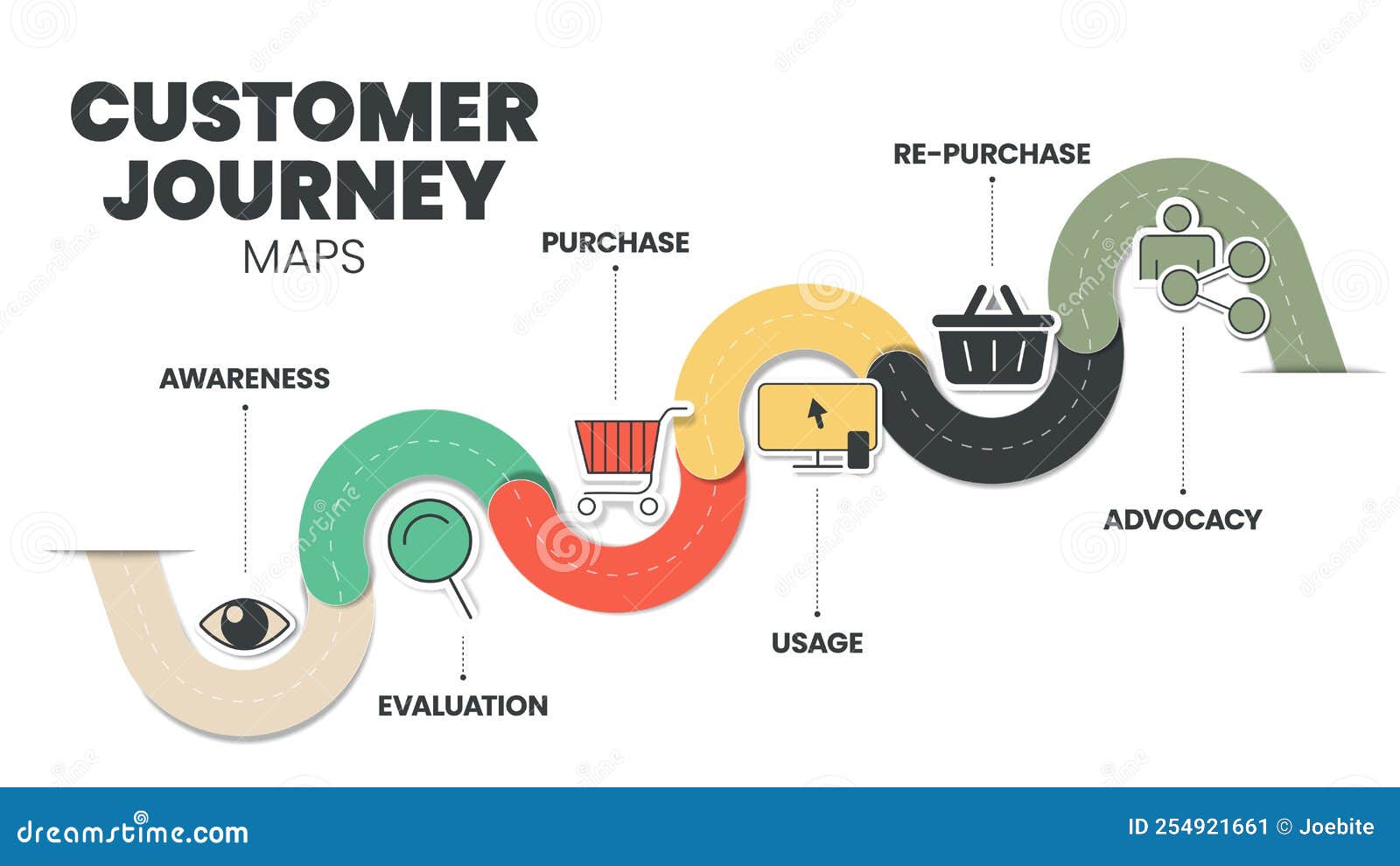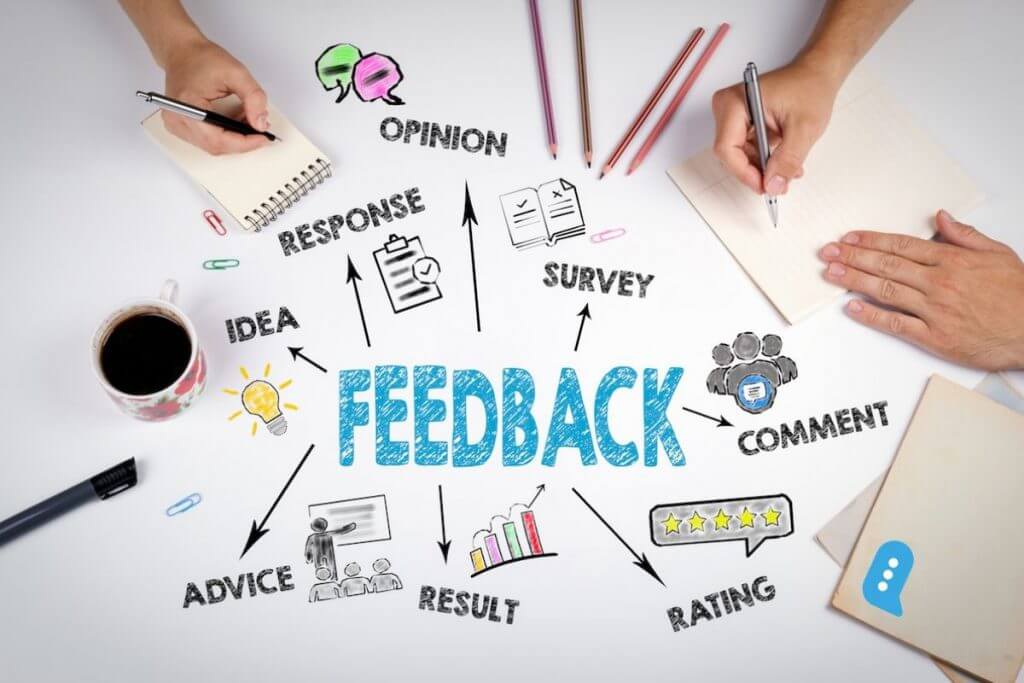Introduction
The customer is not always right. In fact, many businesses fail because they don't understand this simple truth. They focus too much on what they think customers want instead of what customers actually experience. This guide will shift your perspective.
By truly understanding the Customer Journey, you can see where your assumptions may be wrong. You'll discover the real path customers take from first hearing about your product to becoming loyal advocates. This journey is complex and filled with opportunities to improve. Let’s dive into how you can optimize each stage to boost satisfaction and loyalty
Stages of the Customer Journey

The different stages of the digital customer journey are:
Awareness
The first stage of the digital customer journey is awareness:
What is Awareness?
Awareness is the initial stage where potential customers first learn about your brand. It's the moment they recognize a need that your product can fulfill.
How Customers Discover Your Brand
Social Media Ads: A potential customer sees an ad while scrolling through their feed.
Word of Mouth: They hear about your product from a friend who had a great experience.
Search Engines: They find your website while searching for solutions to their problem.
Consideration
The next on the list of digital customer journey is consideration:
What Happens During Consideration?
During consideration, customers evaluate your product against competitors. They look for information to help them make an informed decision.
Factors Influencing Customer Decisions
Reviews and Ratings: Positive reviews from other customers can tip the scales in your favor.
Product Features: Customers compare the unique features and benefits of your product.
Price and Value: They assess whether your product offers good value for the price.
Purchase
In the third stage of digital customer journey is purchase:
The Decision-Making Process
The purchase stage is when the customer decides to buy your product. They are convinced it meets their needs and expectations.
How to Facilitate a Smooth Purchase
Easy Checkout Process: A quick, user-friendly checkout process minimizes cart abandonment.
Multiple Payment Options: Offering various payment methods caters to different preferences.
Customer Support: Providing help during the purchase reassures customers and closes the sale.
Retention
The fourth stage of digital customer journey is retention:
Importance of Retention
Retention focuses on keeping customers happy and engaged after their initial purchase. Loyal customers are more likely to buy again and recommend your brand.
Strategies to Keep Customers Engaged
Loyalty Programs: Reward repeat purchases with points or discounts to encourage loyalty.
Regular Communication: Keep customers informed with newsletters and updates.
Excellent Customer Service: Quickly resolving issues helps maintain customer satisfaction.
Advocacy
Last stage of digital customer journey is advocacy:
Turning Customers into Advocates
Advocacy occurs when satisfied customers actively promote your brand to others, becoming your best marketers.
Encouraging Positive Reviews and Referrals
Incentivize Reviews: Offer discounts or rewards for leaving positive reviews.
Referral Programs: Provide benefits for customers who refer new clients to your brand.
Engage on Social Media: Encourage customers to share their positive experiences online.
By optimizing each stage of the Customer Journey, businesses can improve customer satisfaction and build lasting relationships.
Mapping the Customer Journey
In this section, you’ll find the information about digital customer journey mapping are:

What is Customer Journey Mapping?
Customer Journey mapping is the process of creating a visual representation of the steps a customer takes when interacting with your brand. This helps identify pain points and opportunities to enhance the customer experience.
Suggested Reading: Customer Experience Management
Steps to Create a Digital Customer Journey Mapping
The steps of the digital customer journey mapping are:
-1.png?itok=bVgfsluy)
Research and Gather Data: Collect information from customer feedback, surveys, and analytics to understand their experiences.
Identify Key Touchpoints: Pinpoint all the interactions customers have with your brand, from awareness to purchase and beyond.
Create Personas: Develop customer personas that represent different segments of your audience, each with unique needs and behaviors.
Map the Journey: Visualize the steps each persona takes, noting their goals, emotions, and challenges at each stage.
Suggested Reading: Customer Experience Strategy
Tools and Resources for Digital Customer Journey Mapping
The tools and resources for digital customer journey mapping are
Journey Mapping Software: Use tools like Lucidchart or Microsoft Visio to create detailed journey maps.
Customer Feedback Platforms: Leverage platforms like SurveyMonkey or Typeform to gather insights directly from customers.
Analytics Tools: Utilize Google Analytics or similar tools to track customer behavior and identify key touchpoints.
Improving the Customer Journey
Continuous improvement of the customer journey is the crucial key, so:
Collecting Customer Feedback

Gathering feedback from customers is essential for understanding their experiences and identifying areas for improvement.
Surveys: Send out post-purchase surveys to capture customer opinions on the buying process.
Social Media: Monitor social media platforms for comments and reviews about your brand.
Customer Service Interactions: Analyze feedback from customer service calls and emails to uncover common issues.
Analyzing Pain Points
.jpg)
Identifying pain points allows businesses to address specific issues that negatively impact the Customer Journey analytics.
Customer Complaints: Track and categorize complaints to identify recurring problems.
Usability Testing: Conduct usability tests to observe how customers interact with your website or app.
Analytics: Use data analytics to pinpoint where customers drop off in the sales funnel.
Implementing Changes for Better Experience
Taking action based on feedback and analysis is key to improving the Customer Journey analytics.
Website Enhancements: Simplify navigation and improve load times to create a smoother online experience.
Customer Service Training: Train staff to handle common issues effectively and empathetically.
Product Improvements: Adjust product features or packaging based on customer suggestions to better meet their needs.
Frequently Asked Questions (FAQs)
Why is understanding the customer journey important?
Understanding the customer journey helps businesses optimize touchpoints, improve customer experience, and tailor marketing efforts to meet customer needs at each stage.
What are the main stages of the customer journey?
The main stages include awareness, consideration, purchase, retention, and advocacy, each representing a different phase of the customer's interaction with the brand.
How can businesses map the customer journey?
Businesses can map the customer journey by identifying key touchpoints, collecting customer feedback, analyzing data, and visualizing the steps customers take from initial contact to post-purchase.
What tools are used to analyze the customer journey?
Tools include customer relationship management (CRM) software, web analytics, customer feedback surveys, journey mapping tools, and data visualization platforms.
How can improving the customer journey benefit a business?
Improving the customer journey can lead to increased customer satisfaction, higher conversion rates, better customer retention, and enhanced brand loyalty.
